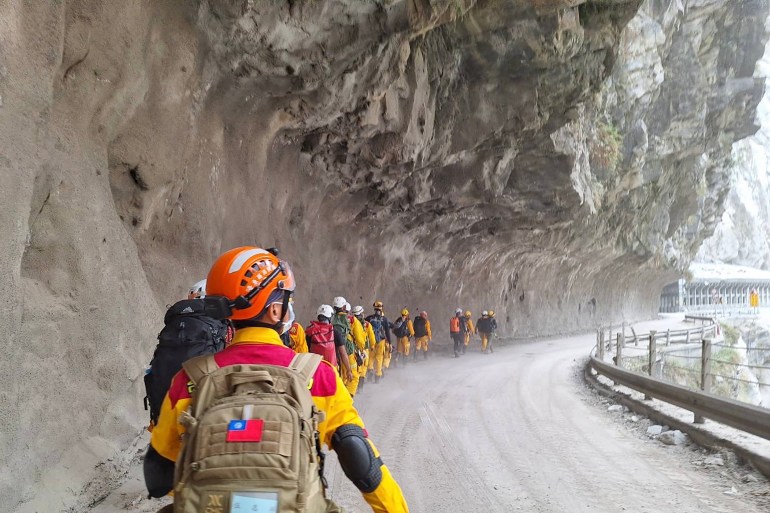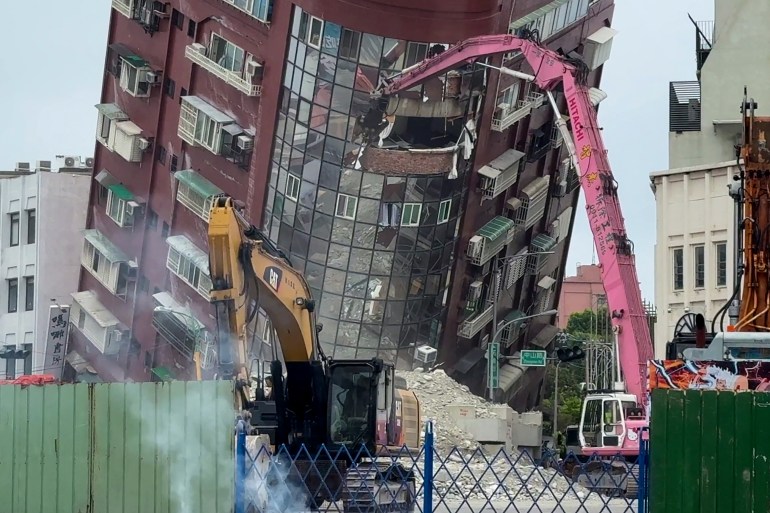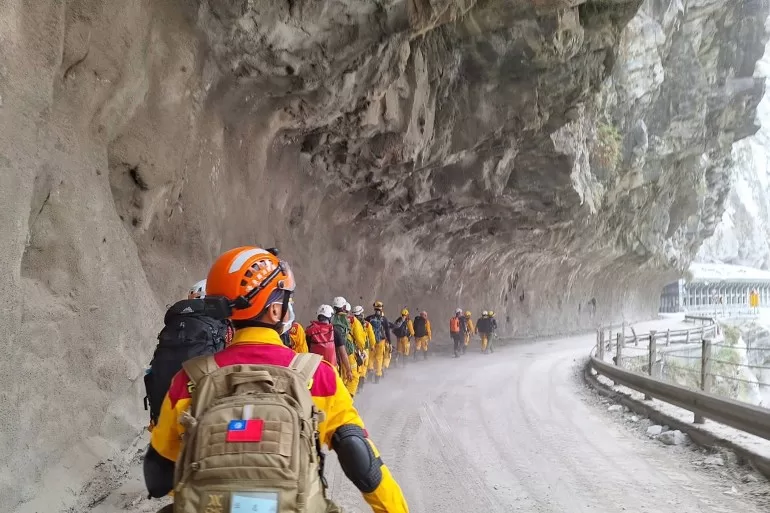Strict building codes and widespread public disaster awareness appear to have staved off a major catastrophe.
Rescuers in Taiwan are continuing their search for 18 people still missing after a magnitude 7.2 earthquake struck the island’s rugged east coast.
Wednesday’s earthquake in the mountainous and sparsely populated eastern county of Hualien killed 10 people, injured more than 1,000 and left hundreds stranded in a national park as landslides cut off roads.
On Friday, Taiwan’s fire department said 18 people were still missing, including six on a hiking trail, and four foreigners previously listed as being Indian, Canadian and Australian.
Rescuers confirmed that about 400 people cut off at a resort in the scenic Taroko National Park were safe, with helicopters taking in supplies and bringing out the injured.
“We’re assessing the possibility of rain today, so our search and rescue colleagues will be equipped with rain gear. However, rain increases the risks of rockfalls and landslides, which are currently the biggest challenges we face,” said Su Yu-ming, captain of the Kaohsiung city search and rescue team.
“These factors are unpredictable, which means we cannot confirm the number of days required for the search and rescue operations at this time.”
A group of 50 workers who were on their way to the hotel by road at the time of the quake were now mostly safe.
“I am lucky to survive this disaster. We were terrified, especially when the earthquake first happened. We thought it was all over, all over, all over, because it was an earthquake, right?” said David Chen, 63, a security manager at the hotel, after he was rescued on Thursday.
“As we were leaving, rocks were still falling. We had to navigate through the gaps between the falling rocks, with the search and rescue team upfront,” he added.
Sleeping in tents
Wednesday’s quake was the worst in 25 years, but strict building regulations and widespread public disaster awareness appear to have staved off a major catastrophe.

More than 100 residents of Hualien, the worst-hit city, chose to spend the night in tents outdoors rather than in apartments with hundreds of aftershocks reported in the hours since the quake.
“Our worry is when the big aftershocks happen, it might be really hard for us to evacuate one more time – especially with the baby,” said Indonesian Hendri Sutrisno, 30, a professor at Donghua University.
He and his wife hid under a table with their infant when the earthquake struck before fleeing their apartment.
“We have all the necessary stuff, blankets, a toilet and a place to rest,” he said.
The earthquake struck the day before Taiwan began a long weekend holiday for Qing Ming, when families traditionally visit the graves of their ancestors to clean and make offerings.
The government warned people to be wary of landslides or rockfalls if they ventured to the countryside for the holiday.
“Do not go to the mountains unless necessary,” warned President Tsai Ing-wen.

More than 100 people were killed in a quake in southern Taiwan in 2016, while a magnitude 7.6 quake killed some 2,400 people in 1999, the worst natural disaster in the island’s history.
